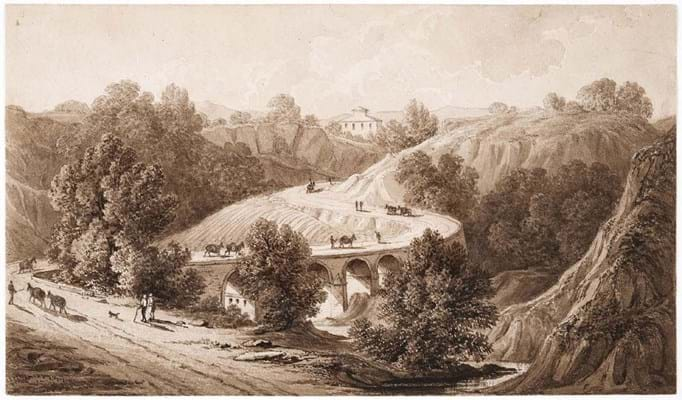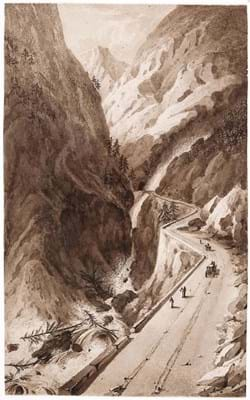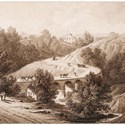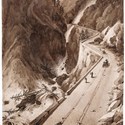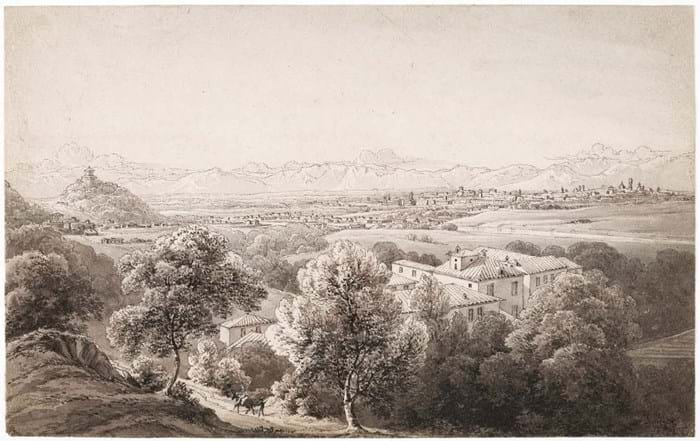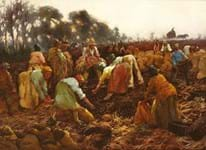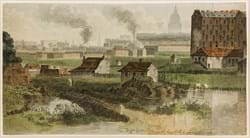In 1817, just two years after the defeat of Napoleon, the young English woman made a trip to Italy with her father and recorded her journey in a series of drawings.
Sixty of these were transformed into etchings to illustrate the book Italian Scenery from Drawings made in 1817 by Miss Batty, published by Rodwell & Martin in 1820.
In a time when British interest in travelling to the continent was on the rise, travel books such as this were in high demand. Batty’s work, produced shortly after the war had ended, was both accurate and appealing.
The 44 works on show at Abbot and Holder are original pen, brush and sepia ink drawings. Found misattributed at auction, they are now offered individually for prices ranging from £275-575. Works are already available to view and can be purchased from May 22.
Competence and confidence
“One might be excused for believing these drawings are the creation of a hard-working professional rather than that much-maligned creature: an accomplished lady amateur,” the gallery says in its introduction to the show.
Indeed, these are Batty’s only known artistic endeavours, but are done with a competence and confidence that show she was not a rank beginner.
For one thing, the compositions seem to have been created with the engraver in mind and include information about the places depicted.
The style of the works, particularly the use of the ‘split brush technique’, which allowed for two strokes to be made at once for an atmospheric effect, suggests that she also studied under the prolific, fashionable artist John Glover (1767-1849).
Finally, it is evident that she used a camera obscura to complete these highly accurate views, including the Bay of Genoa, the Pass of Bramante and the Roman Forum.
The resulting book (good early copies of which can be found online for prices of around £575) came to the attention of Enoch Wood of the Staffordshire potteries. He created a series of blueprinted earthenware featuring her Italian views, or details of them. Many of them were shipped to the US, and it was only recently that the connection between the dishes and the source for their decoration was made.
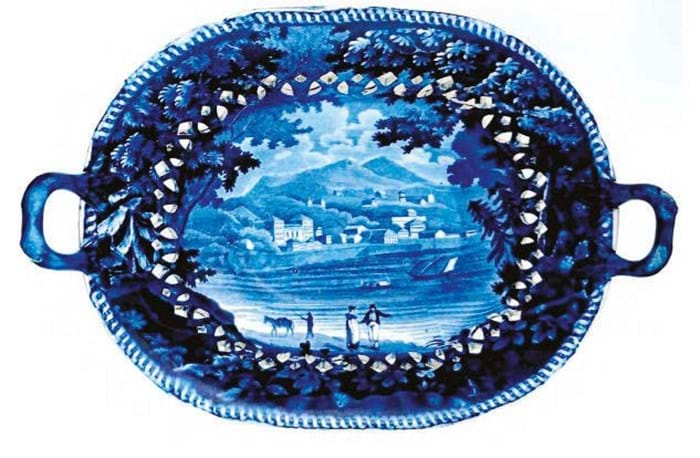
Coliseum, one of the Enoch Wood series of transferware dishes that made use of Batty’s compositions. Courtesy of the Transferware Collectors Club Bulletin. See transcollectorsclub.org
Family talents
Various members of her family pursued artistic interests in the coming years.
Her brother Lt Col Robert Batty (1789-1848), wounded in the Battle of Waterloo, drew in much the same manner, suggesting that they shared a tutor. He published his own illustrated books recording his European travels starting in 1822.
Elizabeth Batty married Philip Martineau (1791-1860), a Master in Chancery and member of a brewing dynasty. Their children included the artist Robert Braithwaite Martineau (1826-69), who is remembered for the Victorian social moralist painting Last Day in the Old Home (1862). Another of their sons, Edward Henry Martineau (1825-1901), was an architect.


